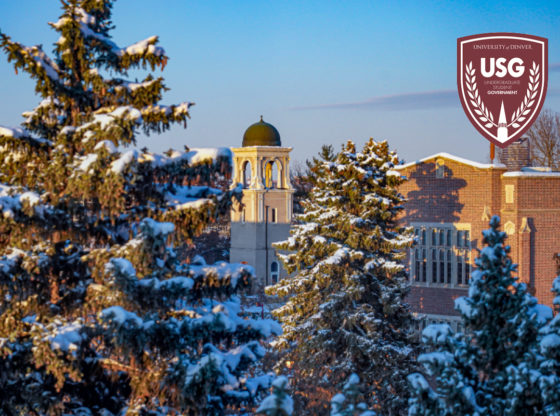With the effects of climate change impacting our day to day lives, sustainable and regenerative cities have become more popular than ever. Regenerative cities are a concept in urban development that builds a relationship between nature and cities, by focusing on the residents’ health and happiness.
A few examples of regenerative and sustainable cities are Wittenberg, Germany, Copenhagen, San Francisco, Vancouver, Stockholm and Singapore. These cities are devoted to combat climate change and improve the quality of life of their citizens. Over 90% of urban areas are coastal, which makes these cities extremely vulnerable to climate change, such as a rise in sea levels.
John Knott is an adjunct professor and executive in residence for the masters of science in real estate and the built environment graduate program at Daniels College of Business. Knott also serves as a guest lecturer in a variety of courses on his knowledge and experience with CityCraft Ventures, a company that restores economic, environmental and social health of our cities by designing and building regenerative and community-focused buildings. CityCraft’s mission is to transform “deeply distressed urban communities into vibrant, showpiece neighborhoods with environmental, social and economic sustainability and resiliency.”
“CityCraft is based on the premise that we must heal the social, economic and environmental systems our people and buildings are connected to before we can achieve a sustainable and regenerative future for our cities,” Knott said.
The non-traditional method of building is what sets CityCraft apart from traditional construction companies because they focus more on the nature of the community and how to create a viable space for them. Knott views the structure and integrity of buildings in an unique way by comparing the building to an organism, having movement and breath.
“Everyone forgets that it’s human culture and individuals that actually impact and influence buildings. If they are not part of the system, it’s never going to work,” Knott said. “We were taught that we are the human habitat business, not the building business, and that we were in the community building business, not the development business. In essence, our practice is about creating shelter for the human community.”
Knott was also on the frontlines of developing and working with Leadership in Energy and Environmental Design (LEED) buildings and certifications. A building obtains a LEED certification based on categories like the use of green materials, energy-efficient systems, water-efficiency features and access to public or bicycle transportation.
The certification is based on a number of points received, which depends on how innovative and sustainable the categories are. The order from least to most sustainable are silver, gold and platinum. At DU, the law school, Burwell Center for Career Achievement, Dimond Family Residential Village and the Community Commons all have LEED certifications.
“We were at the core of developing LEED,” Knott said. “LEED was really important because it advanced the way we live and build.”
Although LEED buildings are a step in the right direction for the environment, Knott noted a few challenges, such as the buildings not being built to withhold climate conditions or workers being unaware of the LEED features.
“A lot of LEED buildings that are built are not oriented properly to the prevailing winds and the solar settings because of the restriction of what is going on. More than 50% of the buildings that are built under LEED, don’t function as LEED buildings,” Knott said. “The reason is that universities are not using the engineers and operating people as part of the design team. So, the building starts to become not functional because people in the building will go back to using their traditional practices, and most of the buildings I work on require the engineers to run the building.”
The most recent CityCraft project was the redevelopment of the Texas Health Science Center, which led to a 41% reduction in energy use, a 48% reduction in potable water use and a LEED Gold certification.
“The building is eight stories tall, in the city of Houston, the worst climate in the country, and it’s in the concrete jungle. Not one side of that building looks the same. That building responds exactly to its climatic condition on each side. It functions to manage under that construction. In essence, LEED buildings are taking traditional design and adding to it,” Knott said in describing the Texas Health Science Center.
Knott and his team focus on community building, and not development, by interviewing people who will work in the new building. They want to see how these individuals will interact with this building, and how the space can benefit them.
“When we worked at the University of Texas Health Science Center, our teams met with the nursing school, and had significant representatives from all the users. This was not just one meeting, it was on-going in the design process. That building became functional for them, which is the number one priority, it’s not about what the design looked like. The design comes out of responding to the functional needs of the human community, and the climatic context that the community is facing,” Knott said.
Sustainable and regenerative cities are currently on an incline, as more cities are switching to architecture that is compatible with changing climate conditions. Regenerative buildings are unique in their own way as they are built for their environment. They will continue to redevelop our urban landscape and make it more eco-friendly. Over time, we will observe if regenerative cities are impacting the social culture and way of life for employees working in regenerative buildings that were customized for their jobs.











